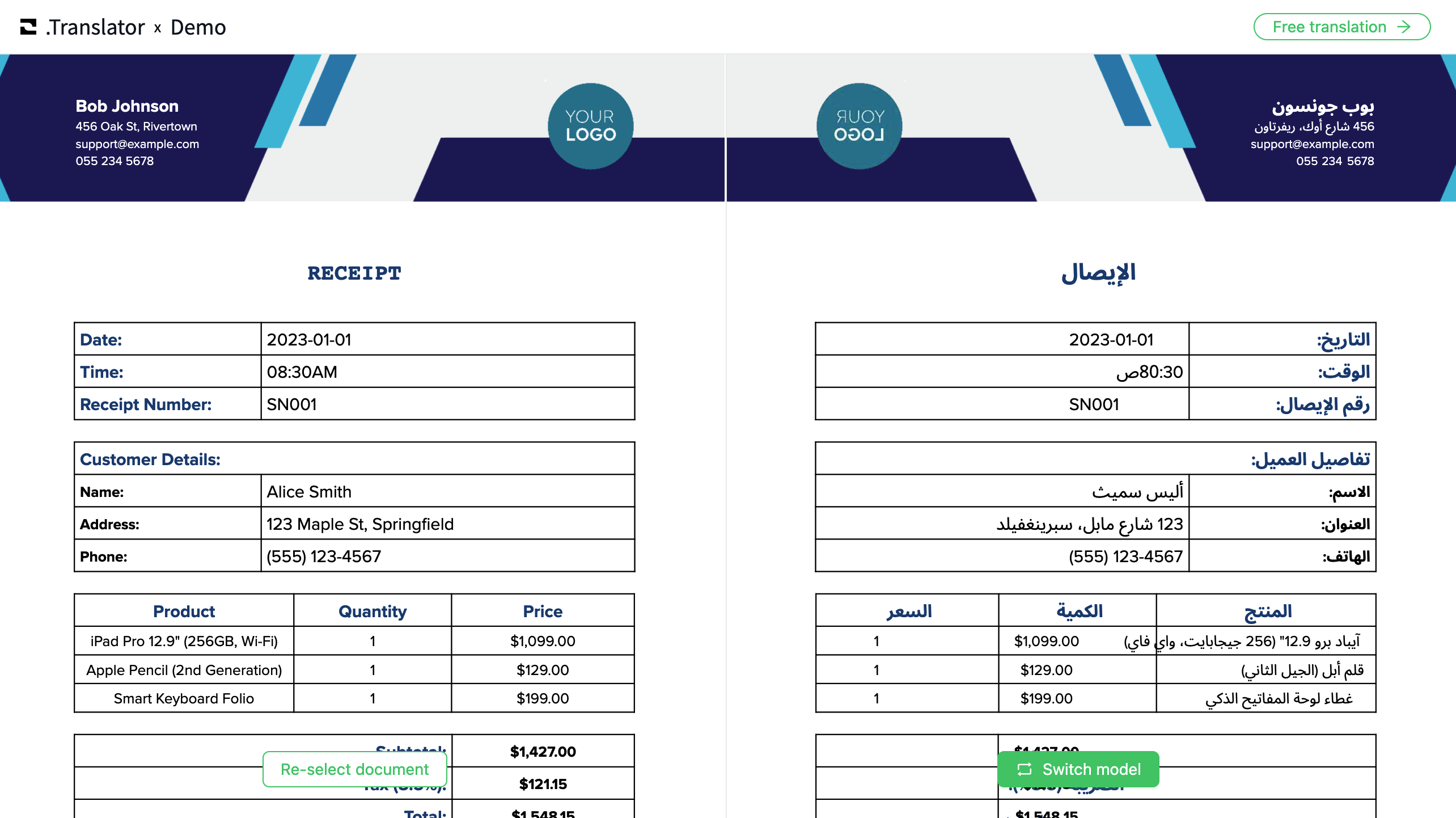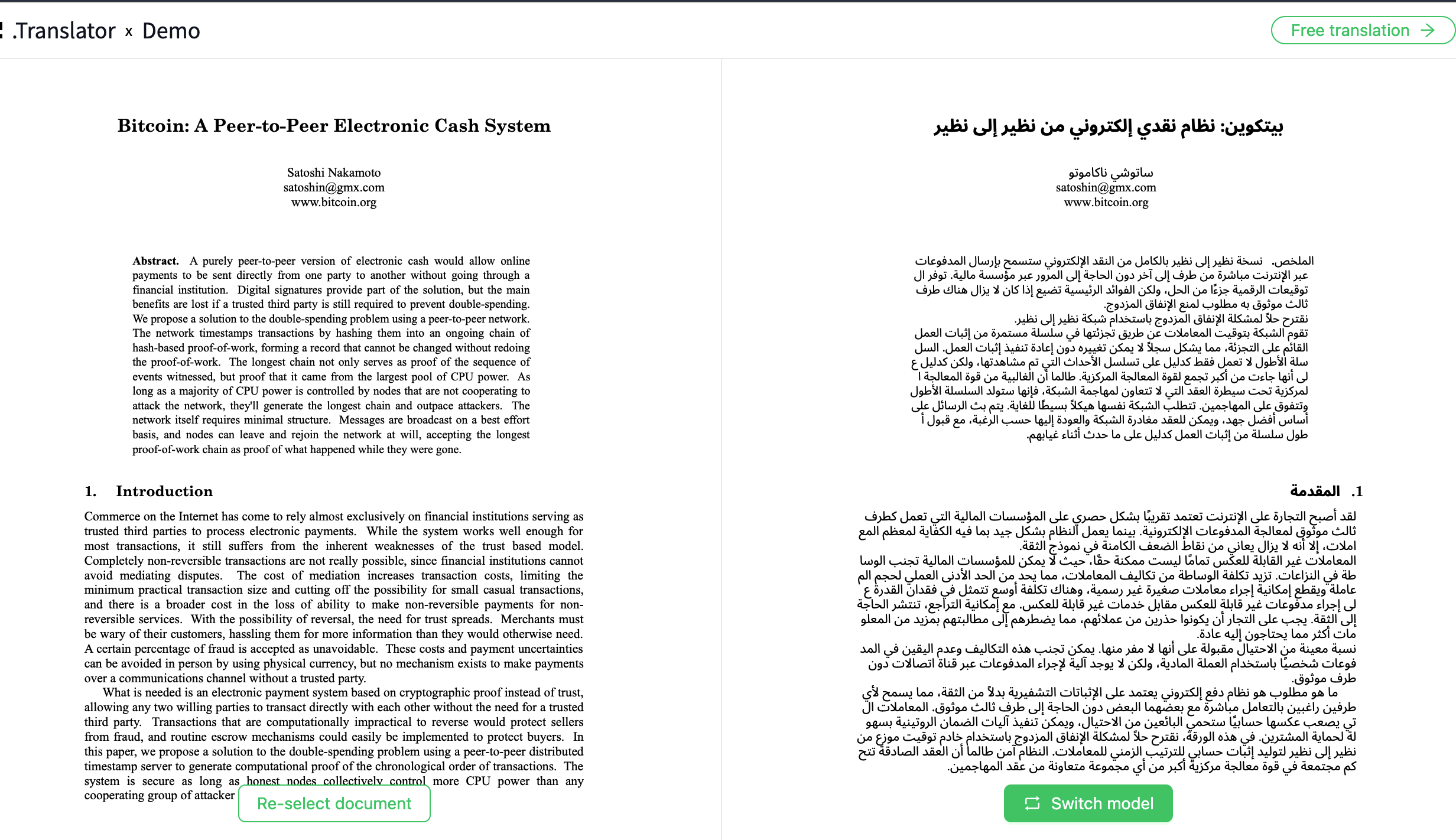BIDI: The Key To Arabic Translation
Yee
Nov 08, 2024

Definition and Principles of the BIDI Algorithm
The Role of the BIDI Algorithm in Arabic Translation
Translating Arabic Documents in O.Translator
Preface
Are you curious about the technological breakthroughs in Arabic, Hebrew, and Persian translation? The combination of the BIDI algorithm (Bidirectional Text Algorithm) and O.Translator is revolutionizing this field. In this article, we will reveal how the BIDI algorithm addresses the complex challenges of translating RTL languages like Arabic and demonstrate the significant advantages of O.Translator in practical applications.
Definition and Principles of the BIDI Algorithm
What is the BIDI Algorithm?
The BIDI algorithm, short for Bidirectional Text algorithm, is a technical specification used for handling languages written from right to left, such as Arabic and Hebrew. It ensures that these languages can be correctly displayed and processed when mixed with left-to-right text, such as numbers and Latin letters. This algorithm is an indispensable part of the international standard (Unicode) to support global text processing needs.
Basic Principles of Bidirectional Text Processing
The core principle of the BIDI algorithm is the recognition and adjustment of text flow direction. It relies on the inherent directional properties of each character and determines the visual presentation order of the entire text through a series of rules. The algorithm follows a set of priority rules to parse and adjust text segments of different directions, allowing users to read and interact smoothly in multilingual environments.
Understanding the Bidi Algorithm
Character Category Identification
Characters in the text are classified according to their writing direction into strong types, weak types, and neutral types.
-
Strong Type Characters
This includes LTR characters, such as Latin letters, and RTL characters, such as Arabic letters. For example, in the string "ABC أول", "ABC" are LTR characters, while "أول" are RTL characters. This means "ABC" will be displayed from left to right, while "أول" will be displayed from right to left.
-
Weak type characters
Characters such as numbers and punctuation marks typically depend on adjacent characters for their direction. For instance, in "123 أول", the "123" is displayed from right to left based on the preceding RTL text "أول", resulting in "أول 123".
-
Neutral type characters
This includes spaces and most punctuation marks. The direction of these characters is generally determined by the surrounding text. For example, in "Hello, أول!", the comma and exclamation mark will be displayed according to the writing direction of the entire phrase (LTR).
Basic direction determination
The basic writing direction of a paragraph is determined by the first strong directional character. For instance, the paragraph text "Hello, أول" begins with the LTR character "H", so even if the following text is RTL, the overall direction of the paragraph remains left to right.
Nesting and Isolation
When handling complex bidirectional text, the Bidi algorithm employs specific control characters (such as LRE and RLE) to define the nested display order. For instance, in LRE "123 أول" PDF, even though "أول" is RTL, the control characters enforce the numbers "123" to display from left to right, ensuring a unified direction for the entire nested text.
Numbers and Punctuation
The direction of numbers typically follows the direction of the surrounding text, unless a specific format dictates otherwise. In the Arabic text "السعر 100 دولار", the number "100" will naturally align with Arabic, displaying from right to left.
Mirrored characters
Certain punctuation marks require mirroring in RTL languages. For example, "Set (x, y)" might appear as "Set )x ,y(" in RTL languages, reflecting the mirrored change of parentheses in different language directions.
Of course, we can further delve into the section 'The Role of the BIDI Algorithm in Arabic Translation', providing more details and examples to enhance the depth and practicality of the content.
The Role of the BIDI Algorithm in Arabic Translation
Accurate handling of text direction
The BIDI algorithm achieves accurate handling of bidirectional text in Arabic translation by adjusting the display order of text. In cases where the text includes elements such as English segments, numbers, and symbols, the BIDI algorithm ensures that different elements are displayed in the expected logical order through a series of priority rules. For example, when writing a technical manual in Arabic that includes English and numbers, the BIDI algorithm can automatically coordinate multiple text directions to ensure consistency in the reader's experience.
Solutions spanning complex contexts
Applying the BIDI algorithm in complex contexts can greatly enhance the accuracy of Arabic translation. For instance, in financial and legal documents, which are often filled with complexly formatted mixed text, the BIDI algorithm can adjust text rendering as needed by recognizing the directionality of specific text blocks. This not only maintains the directional integrity of the text but also ensures the consistency of its logical sequence.
Applications in multimedia and digital content
With the diverse development of digital content, the BIDI algorithm has become essential in multimedia translation and digital publications. In scenarios involving subtitles, such as in Arabic films or video content for online educational courses, the BIDI algorithm ensures smooth and natural transitions between different language directions. This capability also extends to fields like web design and software localization, enabling the Arabic version of user interfaces and experiences to be indistinguishable from those in other languages.
Enhancing the intelligence level of translation software
O.Translator, integrated with artificial intelligence technology, utilizes the language processing expertise accumulated in the BIDI algorithm to improve overall translation accuracy. Through machine learning models, O.Translator can dynamically adjust translation strategies, adapt to constantly changing text content, automatically select the optimal text arrangement, and enhance users' comprehension of the content. This intelligent capability not only provides a valuable tool for professional translators but also offers ordinary users higher quality language services in everyday use.
Translating Arabic Documents in O.Translator
How to Translate?
You can watch this tutorial video: Document Translation Tutorial Video to learn how to translate Arabic documents in O.Translator.
Example of Arabic Document Translation
You can freely view examples of Arabic translations of various document types in our demo environment, whether translating Arabic into other languages or translating other languages into Arabic.





